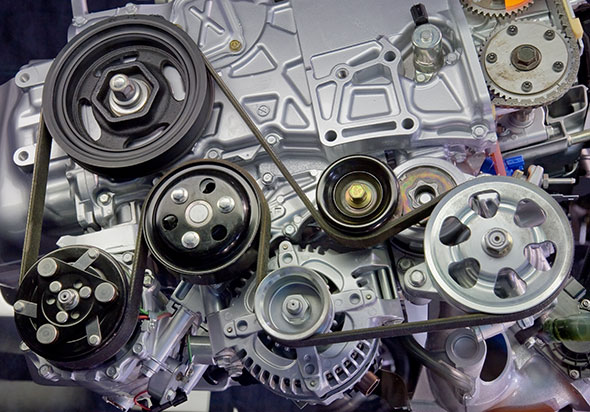By: Gov Auctions | 21 July 2015
Signs You May Need to Replace Your Serpentine Belt

Serpentine belts help to run a number of components in your car’s engine and are therefore quite important to the smooth running of your vehicle. Making sure that this belt is in good working order will mean less vehicle issues and more time on the road. There are a few things you can do to make sure that your car stays in good working order, as well as a few things to do when you think an issue with the belt may be starting to occur.
Noise
One of the most common ways we know that there’s an issue with a belt in our car is if there is noise. The noise may be a distinctive squealing noise when starting the engine and accelerating. This noise could mean that the belt is either too tight or too loose, which can happen naturally over time and with use.
Signs of wear
Check for signs of wear on your belts. Pinch, squeeze, and twist the belt to check it from all angles and feel for any wear or loose, frayed edges. You may be able to feel for areas that are becoming brittle, and see small cracks starting to appear. For a serpentine belt you may also be able to look for areas on the belt where the layers may have started to separate or have missing grooves.
Glazed appearance
Check over the serpentine belt for areas that look slick or glazed. This is a sign that the belt may be able to slip on these spots, and could also mean that it’s on its way to overheating and cracking.
Check the pulleys
The pulleys that hold the belt in place, and where the belt moves across, should also be inspected regularly. Make sure they are in good working order and clean from any rubber deposits. If there are rubber deposits on the pulleys, it could be a sign that your belt is starting to wear. The belt should also be sitting on the pulley straight, and properly aligned.
Check the belt tension
Try to move the belt to check on its tension. It shouldn’t move more than half an inch to an inch. If it moves more than this, or doesn’t move much at all, take the car for a visit to your mechanic to take a look at it as it may be either too loose or too tight.
Oily belt
If when checking the belt it seems like there is oil on it, you may have an oil leak somewhere. This can also mean that the belt may slip on the pulley due to the oil. It’s best to find out where the oil is coming from and fix the leak. If in doubt, take the vehicle to a mechanic to have a look and fix any issues.
Other system issues
Maybe your engine light keeps illuminating, or perhaps your battery has drained suddenly. An improperly functioning serpentine belt may lead to other issues around the engine, as this belt is one of the keys to good performance. A serpentine that is not in good working order can cause further damage to other components such as the power steering, alternator, and water pump.
Age
All belts will need replacement at some stage. They will usually last around five years or 50,000 miles. It’s therefore best to check the serpentine belt regularly to try and extend its life as much as possible, and replace it when it gets too old or worn.